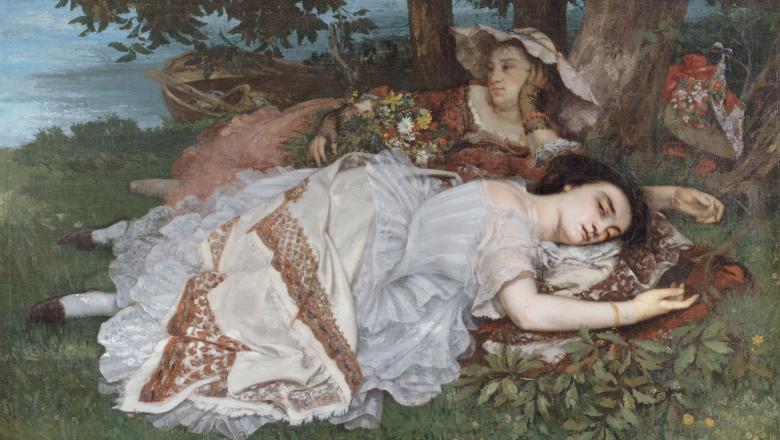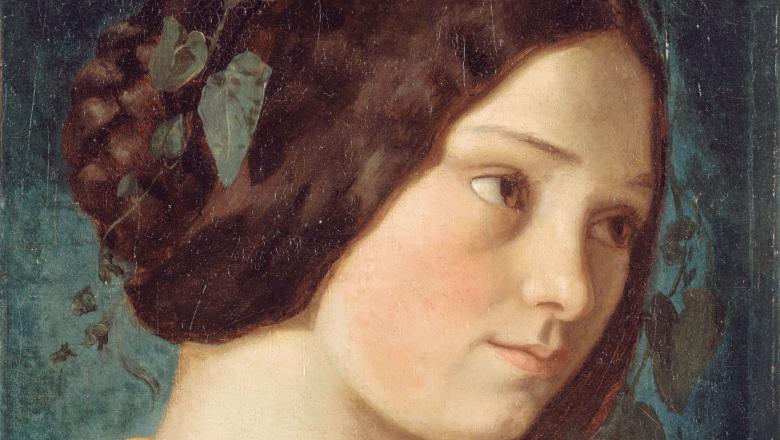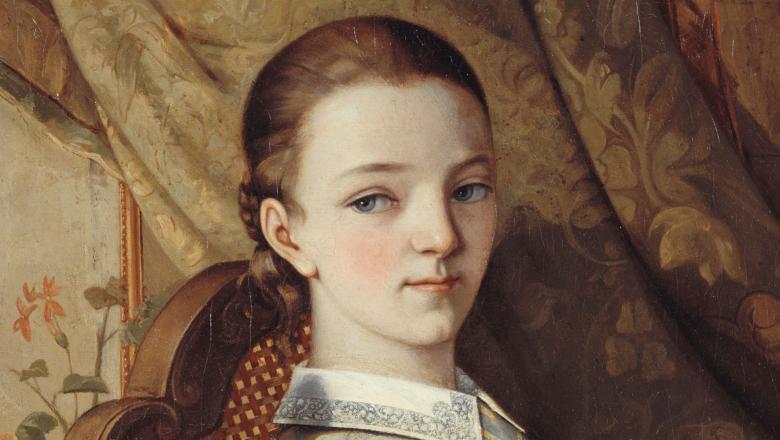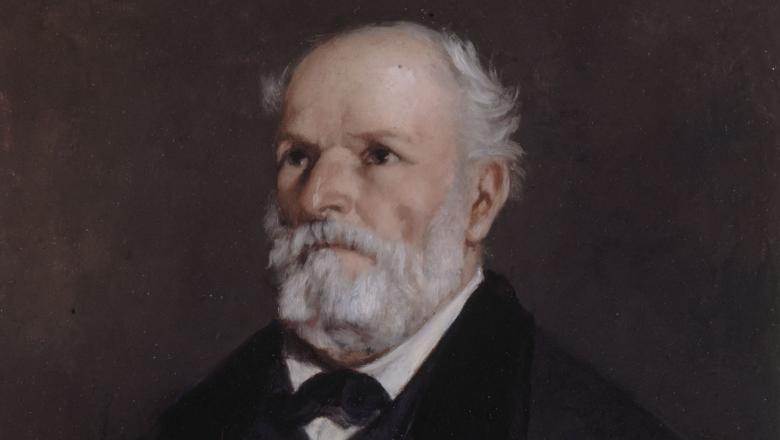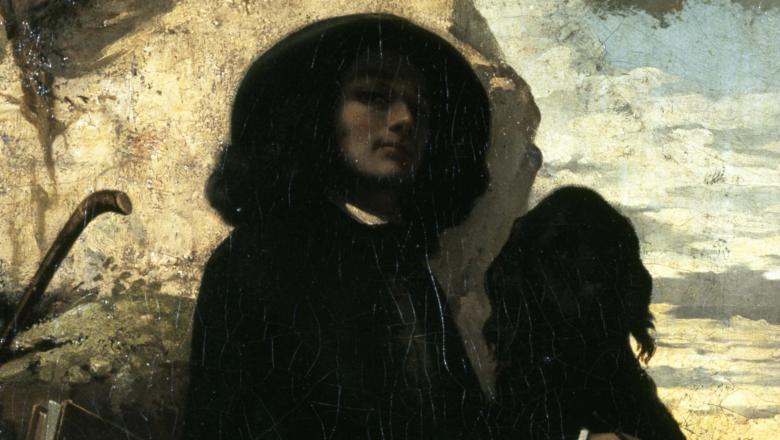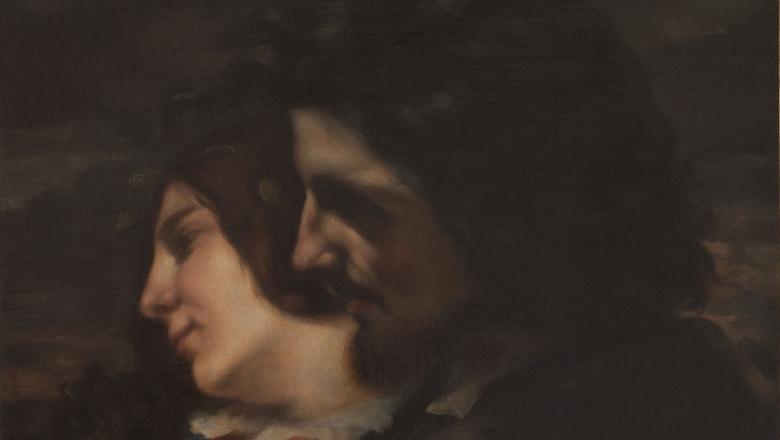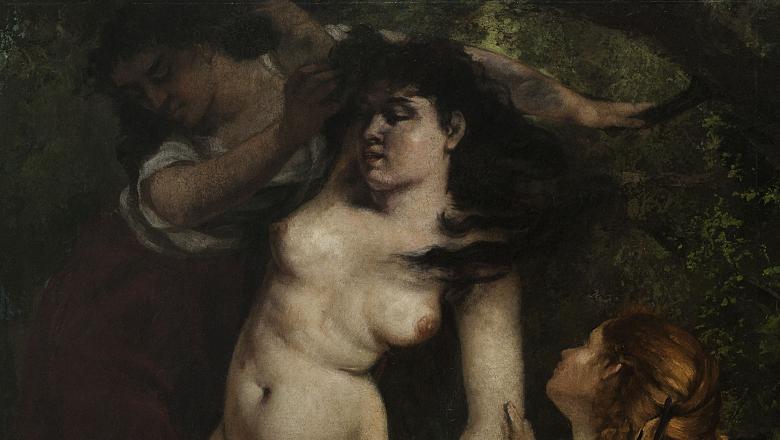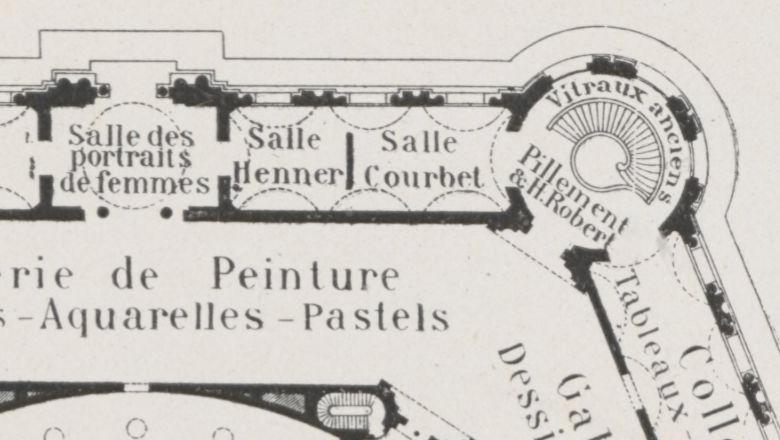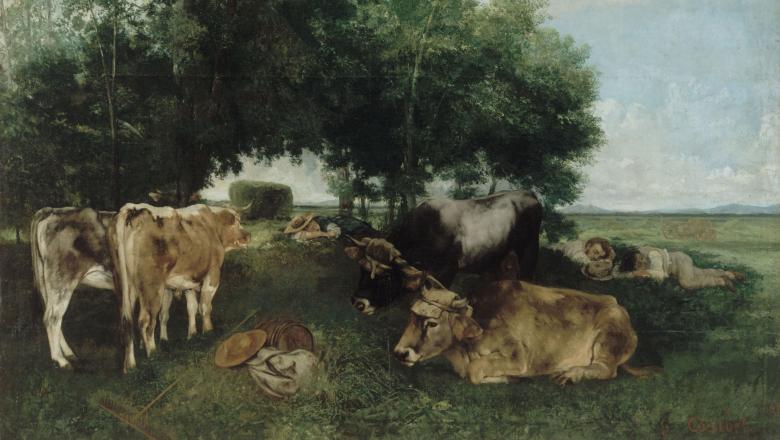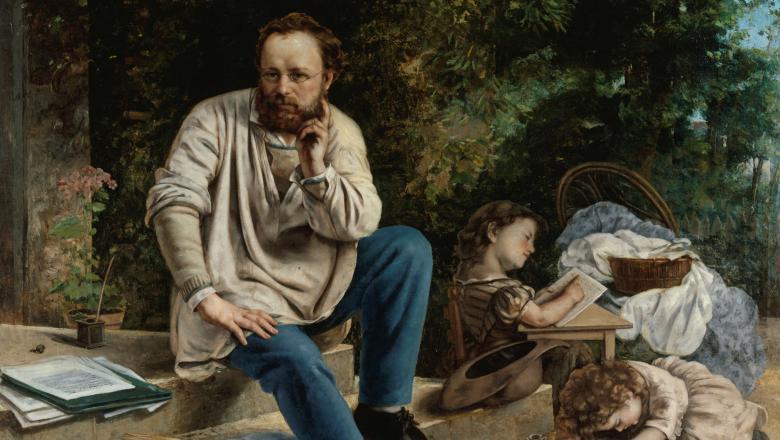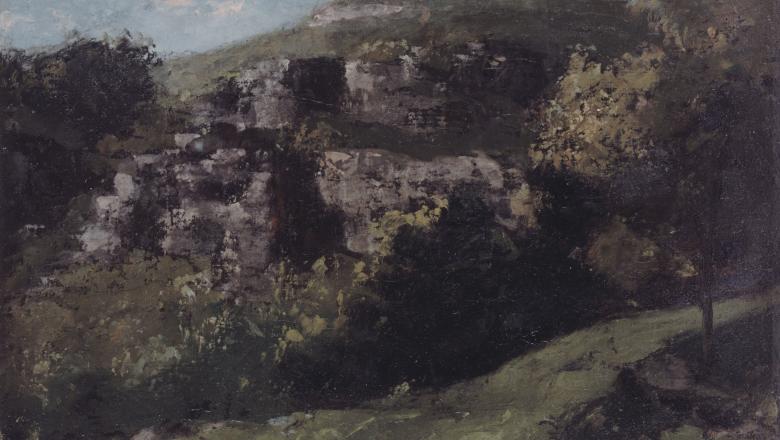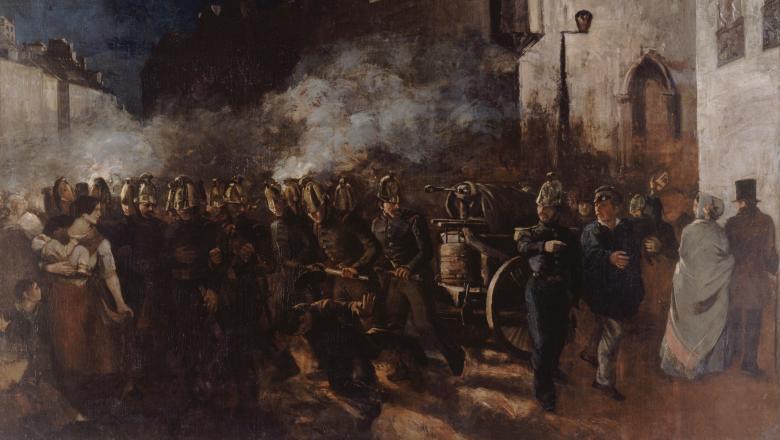After Gustave Courbet’s death in 1877, his younger sister Juliette (1831-1915), who inherited major works still in the artist’s studio, devoted herself to defending and disseminating her brother’s work.
Although Juliette Courbet gifted Pompiers courant à un incendie (Firemen Running to a Blaze) to the Paris fire brigade as early as 1882, her donations to the Petit Palais only began twenty years later. As such, it was in 1906 that she agreed to part with Les Demoiselles des bords de la Seine (Young Ladies on the Banks of the Seine). This painting, central to her brother’s career, had been presented to her in 1901 by Etienne Baudry, writer and friend of the painter, for donation to a museum. It now joined two canvases of the utmost importance on the walls of the Petit Palais: La Sieste pendant la saison des foins (Siesta during the Haying Season), bought by the City of Paris at auction from Courbet’s studio in 1881, and Proudhon et ses enfants (Proudhon and his children), acquired in 1900.
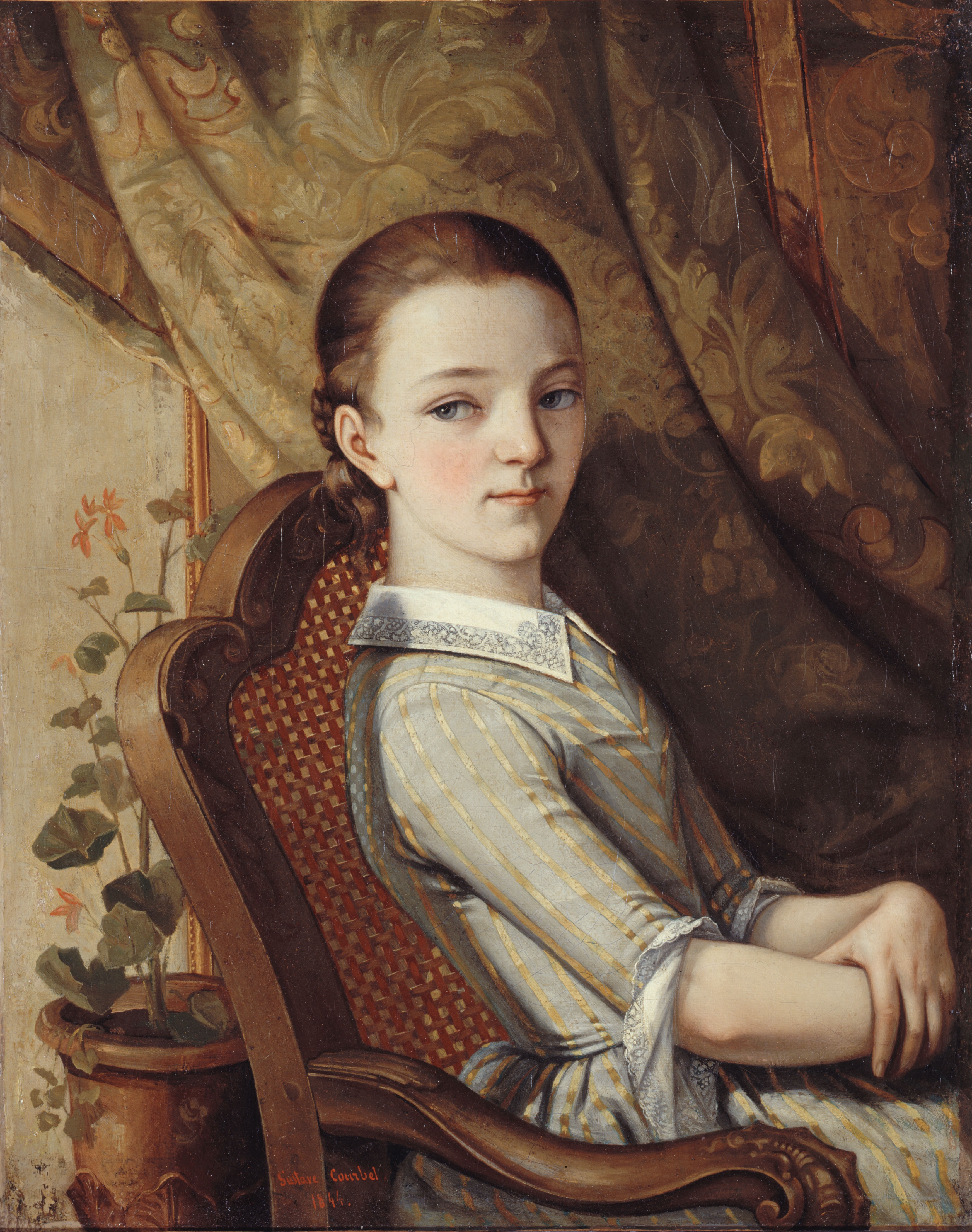 Three years later, Juliette Courbet decided to offer six new paintings to the Petit Palais: three family portraits, one of their sister Zélie, one of Juliette herself aged 13, and one of their father Régis, as well as the self-portrait Courbet au chien noir (Courbet with a black dog), exhibited at the Salon of 1844, Les Amants dans la campagne (Lovers in the Countryside), a replica of the painting held at the Musée des Beaux-Arts in Lyon, and Trois baigneuses (Three Bathers), a representation of female nudes, the first such example to be held by the museum.
Three years later, Juliette Courbet decided to offer six new paintings to the Petit Palais: three family portraits, one of their sister Zélie, one of Juliette herself aged 13, and one of their father Régis, as well as the self-portrait Courbet au chien noir (Courbet with a black dog), exhibited at the Salon of 1844, Les Amants dans la campagne (Lovers in the Countryside), a replica of the painting held at the Musée des Beaux-Arts in Lyon, and Trois baigneuses (Three Bathers), a representation of female nudes, the first such example to be held by the museum.
In recognition, the fourth committee meeting of the municipal council proposed to award a donor’s medal to Juliette Courbet and to create a special room in the Petit Palais designed to promote the study of the artist’s work. Opened to the public on 23 February 1909, the “Courbet Room” presented the painter “in the many phases of his genius” 1. Indeed, the works presented at the Petit Palais are representative of the different periods of the artist’s career, youthful works being displayed together with those reflecting scandal, maturity and exile.
The opening of this room was welcomed enthusiastically. Vilified in his lifetime, Courbet was now recognised as one of the great masters of French painting. The newspaper Les Nouvelles praised the donor and noted that, thanks to her, the Petit Palais now possessed Young Ladies on the Banks of the Seine, a “faultless masterpiece, which can be counted among the ten or twelve crucial works of art of the nineteenth century” 2. According to L’Humanité, “in its wonderful sobriety, the Courbet Room is, as of today, one of the most beautiful venues of which the Paris Collections can be proud” 3.
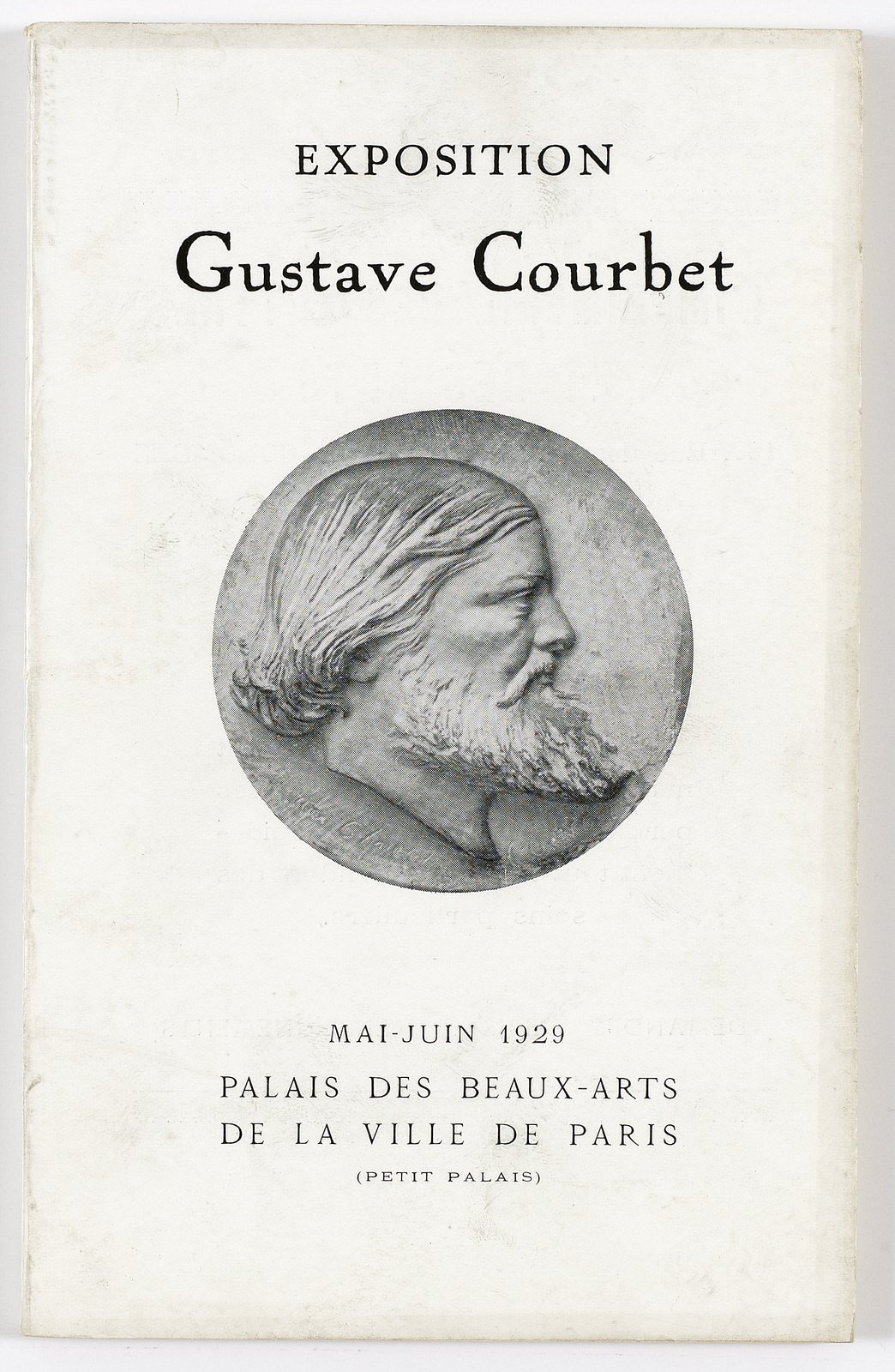 Juliette Courbet made a final donation to the Petit Palais in 1912, a sculpture by Courbet entitled Femme à la mouette (Woman with Gull), before dying in reclusion three years later, having spent a large part of her life faithfully guarding the memory of her brother, as a “loving and devoted sister working without any self-interest” 4.
Juliette Courbet made a final donation to the Petit Palais in 1912, a sculpture by Courbet entitled Femme à la mouette (Woman with Gull), before dying in reclusion three years later, having spent a large part of her life faithfully guarding the memory of her brother, as a “loving and devoted sister working without any self-interest” 4.
In parallel, the Petit Palais’s Courbet holdings were further complemented by successive donations presented by the journalist and art critic Théodore Duret, enhancing the collections with the Portrait de Monsieur Corbinaud in 1906, Grappes de raisin (Bunches of Grapes), L’âne (The Donkey) and Le Chevreuil (The Roe Deer) in 1913, Rochers à Ornans (Rocks at Ornans) in 1920 and Portrait de femme (Portrait of a Woman) in 1922.
Lastly, the transfer to the museum, for its post-war reopening in 1920, of Firemen Running to a Blaze, and the purchase of Le Sommeil (The Sleepers) from the Paul Vallotton Gallery in 1953, further complemented the holdings.
Moreover, the Petit Palais strove to make Courbet’s work better known by means of exhibitions, with retrospectives in 1929 and 1955, and more recently the show Yan Pei-Ming / Courbet, Face to Face, organised in 2019-2020 to mark the bicentenary of the birth of the master of Ornans.
C. M.
1 Henry Lapauze, Le palais des beaux-arts de la Ville de Paris (Petit Palais), 1910, p. 73.
2 "L'actualité. Un magnifique présent", Les Nouvelles, 15 February 1909.
3 "Notes. La Salle Courbet", L'Humanité, 21 February 1909.
4 Letter of 15 September 1906 from Juliette Courbet to Henry Lapauze, Petit Palais documentary resources centre, "Juliette Courbet" donor dossier.

